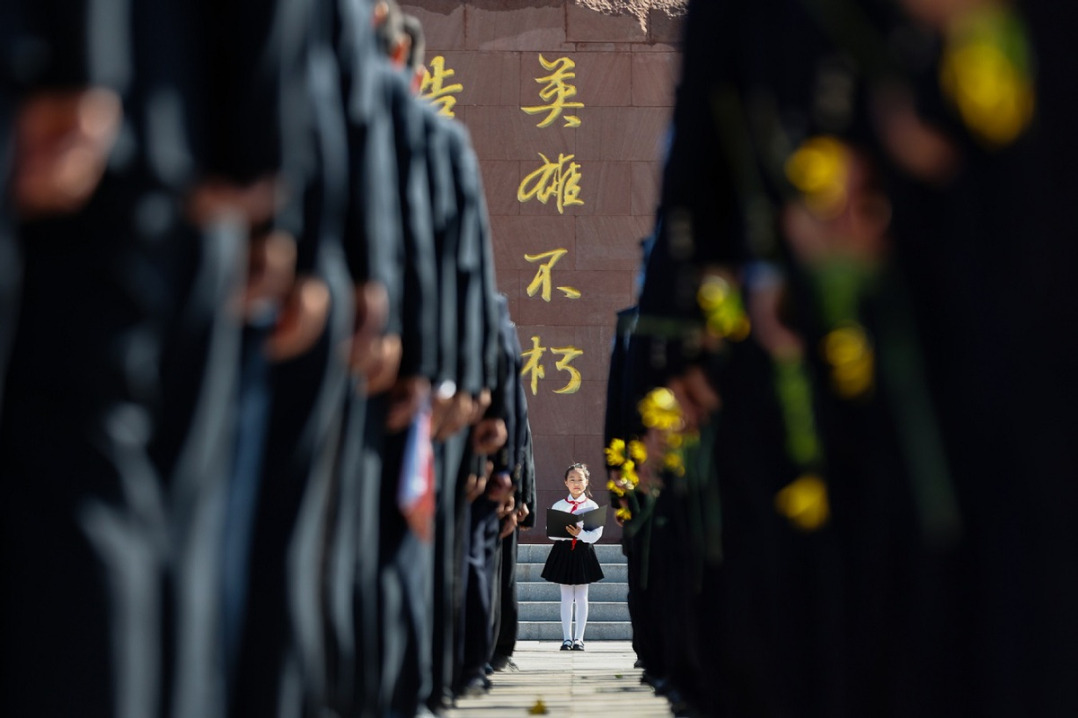A building of awareness
By Yang Feiyue and Yuan Hui | CHINA DAILY | Updated: 2023-09-14 07:54

"It's not hard to imagine the wealth and status of the wearer during her lifetime," Li says.
Archaeologists believe it belonged to a noble of the nomadic Xiongnu people in the early Western Han Dynasty (206 BC-AD 24) and is, so far, the only known female headpiece of its kind from that period.
The main style of the crown and accompanying jewelry is influenced by Central Plains culture, while the animal motifs that adorn its top retain the characteristics of northern nomadic culture. The glass and amber beads on the crown were pretty common in the Central Asian region, while the craftsmanship carries traces of ancient Western civilizations.
In Li's eyes, the value of these items lies not only in their splendid appearance, but also in the cultural inclusiveness they embody.
Whenever Li has time, he will tour the museum, where he has worked for more than 20 years.
"Especially when temporary and special exhibitions are on," he says, adding that his major focus has been bronzeware.
"Items from Ordos belong to the north, mainly found along the Great Wall, and they are a good complement to those found in the Central Plains area," he adds.
Speaking about their differences, Li says the northern items bear engraved animal patterns and were closely related to nomads' wars and production activities, while those from the central area of the country leaned toward sacrificial culture.
Whenever he stands in front of the exhibits in the museum, Li says he feels as if he is traveling thousands of years back in time to engage in a profound dialogue with them.
Born and bred in Ordos, Li has been exposed to the fascination of cultural relics since childhood, when he would accompany his father to work at a local museum. During holidays, he followed his parents to the countryside and engaged in cultural relic surveys.
The influence of those formative years saw him opt for history, cultural heritage and museology studies at Inner Mongolia University in Hohhot, the region's capital city.
"It helped make my history knowledge more systematic, and paved the way for my later research," Li says.
After graduation, he went straight to work at the museum, where he was first in charge of cultural relic collection, authentication and protection.
It didn't take long before he realized the line of work requires a deep integration of theory and practice.























